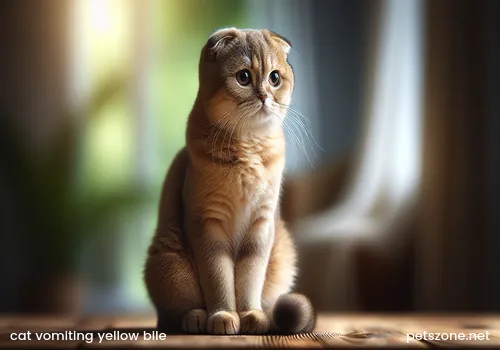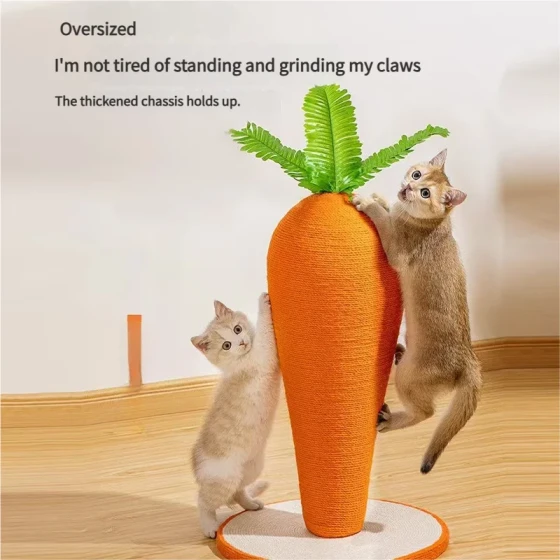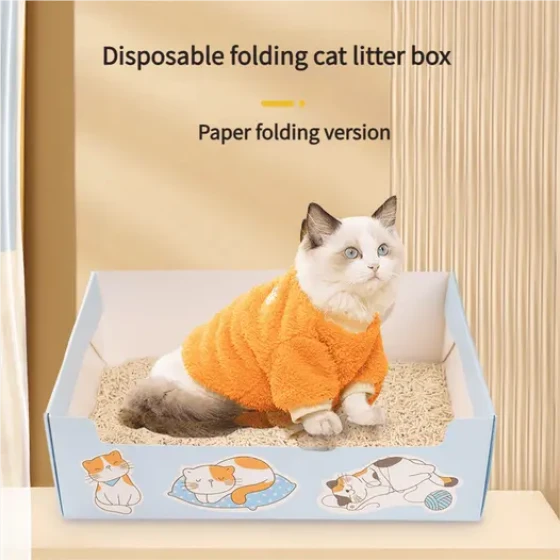What does it mean when a cat vomits yellow liquid_Caution these 4 major hidden dangers
Seeing your cat vomit yellow liquid, many cat owners might instantly feel a jolt of worry as scary thoughts flash through their minds. Indeed, this yellowish fluid is usually bile, which is not a trivial sign. But don’t panic; in most cases, a cat vomiting yellow liquid is not the end of the world. Sometimes it’s just a mild stomach upset, especially if the cat has been fasting too long. However, this can also hide some health signals that shouldn’t be ignored. Like the tip of an iceberg, the small yellow part seen above water may indicate bigger underlying problems. So, we need to act like detectives and carefully interpret the meaning of this “yellow liquid.”
First, we need to know what this yellow liquid is. Simply put, yellow liquid mainly consists of bile and stomach acid. Bile is produced by the liver and stored in the gallbladder, primarily responsible for helping digest fats. Under normal conditions, it’s released when food enters the small intestine. But if the cat’s stomach is empty or there’s an issue in the digestive tract, bile may reflux into the stomach, irritating the gastric mucosa, then cause the cat to vomit. The vomit appears yellowish, sometimes foamy or greenish.

The most common and also most benign cause is that the cat is “too hungry.” Imagine how you feel when your stomach acid churns late at night from hunger; cats can feel similarly. When they haven't eaten for a long time, stomach acid and bile accumulate, irritating the stomach and easily causing vomiting. Especially in households with scheduled feeding habits, if the gap between meals is too long, or if the cat is picky and doesn’t eat well, this can happen in the early morning or late at night. Royal Canin’s materials also mention that prolonged fasting can cause stomach acid not diluted by food, resulting in the cat vomiting white foam or pale yellow clear liquid. As an experienced owner puts it, “This is typical cat fasting vomiting. Simply put, there is nothing in the cat’s stomach, it’s just too hungry.” The solution is usually simple: adjust feeding frequency, try smaller and more frequent meals, shorten intervals between feedings, or add a small meal before bedtime.
However, if the cat frequently vomits yellow liquid or has other symptoms, do not take it lightly. This may be a deeper warning signal from the body. Referring to various information sources, we can summarize these potential “hidden dangers” into the following aspects:
- Discomfort and malfunctions of the digestive system itself
- Acute gastroenteritis: This is a very common cause, possibly due to eating unclean, spoiled food, sudden food changes, or catching a chill or stress. Symptoms usually include vomiting yellow liquid, lethargy, decreased appetite, diarrhea, and even fever. As mentioned in a Sina News article, "Weather, improper feeding, and catching a chill can cause cat gastroenteritis."
- Inflammatory bowel disease (IBD): This chronic condition causes long-term inflammation of the intestinal wall, thickening of the bowel wall, and abnormal peristalsis, a common cause of chronic vomiting in cats. IBD may be related to bile reflux, which irritates the stomach. Cats with IBD can also display chronic diarrhea, weight loss, and reduced appetite, with symptoms varying according to the severity and location of inflammation.
- Hairball disease: Cats are grooming experts but ingest dead hair while licking. Small amounts of hair can be excreted through feces, but if there is too much hair or the cat’s gastrointestinal motility is slow, hairballs can form in the stomach or intestines, causing irritation, blockage, or inflammation. Hairball disease may cause frequent retching, sometimes vomiting hair clumps, but when hair cannot be expelled it may irritate the stomach causing vomiting of yellow liquid.
- Ingestion of foreign objects: The saying “curiosity killed the cat” is true. Cats sometimes swallow non-digestible items like strings, plastics, or small toys. These foreign objects can get stuck in the digestive tract, causing obstruction or irritation, leading to frequent vomiting, sometimes yellow liquid or stomach acid. Pica, the tendency to eat non-food substances, may also relate to nutritional deficiencies or psychological stress.
- Food intolerance or allergy: Just like some people have adverse reactions to certain foods, cats may also be sensitive to certain ingredients, causing indigestion and vomiting.
- Signals from other systemic diseases
- Liver or gallbladder problems: Bile is produced by the liver and stored in the gallbladder. If the liver or gallbladder has inflammation, infection, or blockage, bile secretion, storage, or excretion abnormalities may cause bile reflux and vomiting. Liver and gallbladder diseases often accompany jaundice (yellowing of gums and skin), depression, loss of appetite, and weight loss.
- Pancreatitis: The pancreas secretes digestive enzymes as well as insulin. Inflammation of the pancreas affects digestion, leading to vomiting (often a primary symptom), abdominal pain, lethargy, and reduced appetite.
- Kidney disease: Especially chronic kidney disease, common in elderly cats. Reduced kidney function causes toxin buildup that irritates the gastrointestinal tract, causing vomiting, poor appetite, increased drinking and urination, weight loss, and other symptoms.
- Hyperthyroidism: Common in older cats, excessive thyroid hormone speeds metabolism, impacts the digestive system, causing weight loss (despite a good appetite), vomiting, diarrhea, increased drinking and urination, and behavioral changes (more active or agitated).
- Parasite infection: Intestinal parasites (e.g., roundworms) irritate the intestines, impair digestion and absorption, causing vomiting (sometimes worms may also be vomited), diarrhea, weight loss, and bloating. Regular deworming is an important preventive measure.
- Stress or anxiety: Although less direct than the above causes, cats are sensitive animals. Environmental changes, being frightened, or feelings of insecurity can cause physiological reactions like vomiting.
After reading this, you may feel the situation is complex. Indeed, the causes of a cat vomiting yellow liquid are varied — from the simplest fasting to chronic disease or even foreign body obstruction. The key is not to panic upon seeing yellow liquid but to calmly observe and judge comprehensively.
How to determine if it’s a minor issue or a major problem?
Remember several key points:
* Frequency and duration: Occasional vomiting of yellow liquid, especially after prolonged fasting, with normal spirit and appetite afterward, usually is not serious. But frequent or persistent vomiting (e.g., multiple times a day or over several days) requires vigilance.
* Accompanying symptoms: Besides vomiting yellow liquid, does the cat show other abnormalities? For example: lethargy, drowsiness, poor or no appetite, diarrhea, weight loss, abdominal pain (resisting belly touch, hunched back), dehydration (poor skin elasticity, sunken eyes), excessive thirst and urination, jaundice (yellow skin, eyes, gums), blood in vomit. Immediate veterinary care is strongly advised if any of these appear.
* Vomit characteristics: Is it just yellow liquid? Or mixed with hair, food residue, or even worms? Blood in vomit (bright red or coffee-colored) is an emergency signal.
* Cat’s behavior: After vomiting yellow liquid, does the cat immediately act like nothing happened and go play, or does it seem very uncomfortable, hide, and resist touch?
What can cat owners do?
- Adjust feeding: If suspected due to fasting, try smaller, more frequent meals. Ensure feeding times are regular.
- Observe and record: Keep track of the time, frequency, vomit characteristics, and all accompanying symptoms. This information is vital for the vet's diagnosis. Photos or videos can help.
- Check the environment: See if there are small items or toxic plants the cat might accidentally ingest at home.
- Short-term fasting: If the cat vomited only once or twice of yellow liquid and is otherwise fine, try fasting for 6-12 hours to let the stomach rest. Make sure the cat can drink water to prevent dehydration. After fasting, try feeding easily digestible food.
- Do not medicate without guidance: Unless directed clearly by a veterinarian, do not give human anti-vomiting or anti-inflammatory drugs, as many medicines are toxic to cats.
- Seek veterinary care promptly: If vomiting is persistent, frequent, or accompanied by any severe symptoms listed above, take the cat to the vet immediately. The vet will perform a detailed inquiry, physical exam, and possibly blood work and imaging (X-ray, ultrasound) to find the root cause.
Prevention is always better than cure:
Maintain regular and hygienic eating habits, provide clean water, deworm regularly, groom frequently (especially for long-haired cats) or use hairball control products appropriately, avoid contact with potential foreign bodies or toxins, and have regular checkups (especially for elderly cats, twice yearly is recommended). These help reduce the risk of cat vomiting.
In conclusion, when you see your cat vomiting yellow liquid, don’t rush to imagine the worst. Most of the time, it’s just the cat telling you, “I’m a bit uncomfortable.” Our job is to understand this signal, assess severity, and seek professional help if necessary. After all, cats can’t speak; they express their trust in their owners through every subtle reaction. Careful observation and timely action are our unshirkable responsibilities as cat owners.

-560x560.webp)

